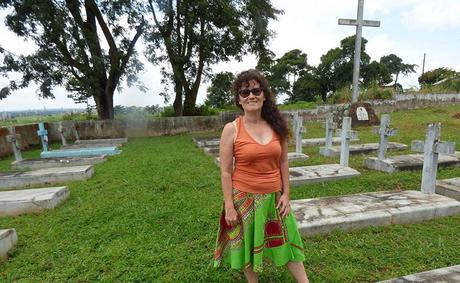
Discovering the unusual history behind the Polish Catholic Church at Nyabyeya near Masindi
Uganda consistently ranks highly as a country that cares for and welcomes refugees. This is not a new phenomenon, as a story from the 1940s reveals.
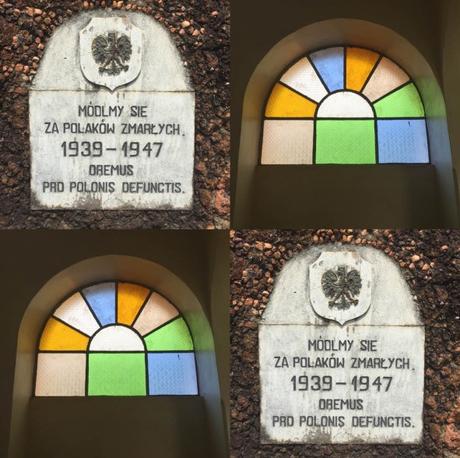
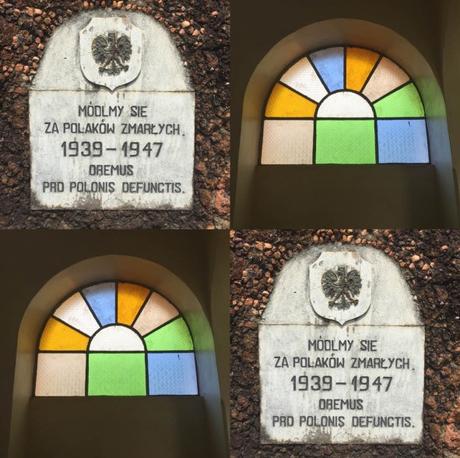
Visitors to Masindi are frequently amazed to learn that the area was once home to a community of Poles who built a church that remains popular with the community to this day. 45 minutes' drive from Masindi, adjacent to Nyabyeya Forestry College, is Uganda's only Polish church. If this is unusual, consider also the fact that it was built by refugees, mostly women, who fled Europe during the Second World War. The Polish Church at Nyabyeya is an anomaly, both architecturally and culturally but this unusual story has many positive elements, of sanctuary and childhood rediscovered.
Read their story and scroll down to view my photos of the church as it is today.
Why did Polish refugees come to Uganda?
In the early 1940s, more than 2,000 Polish women, children and elderly men arrived in western Uganda. They were some of over 18,000 Poles in 22 settlements in British colonies across Africa.
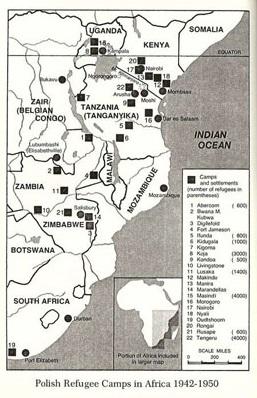
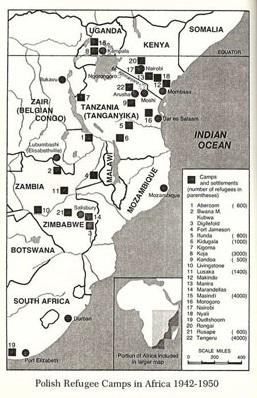
This group of Poles had been held in Siberian prisoner of war camps until 1941 when an amnesty allowed them to be freed. Polish men of fighting age joined General Anders' army. With war raging across Europe, those who couldn't join the army were offered shelter in one of Britain's overseas territories. Over 110,000 people - the army and civilians - made their way from the Steppes of Russia to Iraq, Iran, Palestine and India. The Poles destined for Uganda were carried by boat to Mombasa and by rail across Kenya. Polish refugees arrived in Namasagali Port on the River Nile and were ferried onto Lake Kyoga by East African Harbors and Railways water transport up to Masindi Port. From here they boarded vehicles to their new homes (or settlements) near Masindi.
It's hard to imagine what trials this community went through on their months and years of travel.


The book "From the Steppes to the Savannah" by Barbara Porajska recounts the story of their journey, mostly on foot, from the Russian Steppes and across the Indian Ocean to Mombasa and on to Masindi.
Who built the Polish Church near Masindi?
The Polish Catholic Church at Nyabyeya was built almost entirely by the women who had left their husbands and other male relatives in Europe, fighting in World War Two.
The church was built between 1943-1945, at the foot of Mount Wanda. Above the church entrance is the Polish coat of arms with the inscription Poloniae semper Fidelis. On the exterior is another inscription (in Polish, English, Latin and Kinyoro) saying: "This church is dedicated to the Blessed Virgin Mary, Queen of the Polish Crown, built by Polish exiles while wandering to the free Fatherland." The (original) pews are hard carved, as is the towering figure of Jesus, carved from a single tree trunk. Above the altar hangs the icon of Our Lady of Częstochowa. On the church walls are the Stations of the Way of the Cross, with inscriptions in Polish. The church floor is made of hand-made hexagonal bricks. To visit the church, you will need to book in advance as the church receives few visitors and is often locked. (Scroll down for more details).
What was life like in the settlements?
"For children, Africa was a paradise" compared to the hell of Siberia from where they had come. According to the Association of Saint Michael the Archangel:
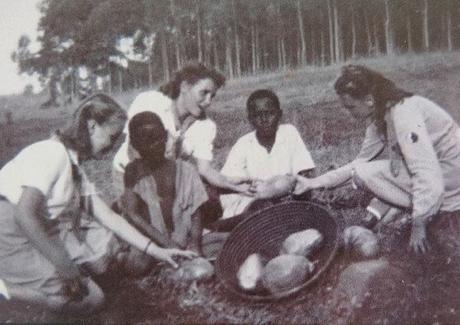
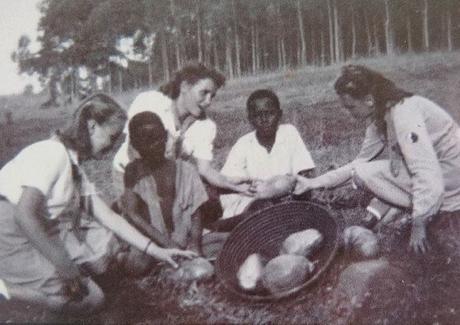
"The Poles travelled by ship from India to the port of Mombasa in Kenya. Later, they travelled inland to Lake Albert in Uganda, where "a piece of jungle was grubbed up for them, and clay houses covered with ivory grass were gradually built. The floor in the houses was made of clay, instead of windows - wooden shutters, and the light was an oil lamp. The furniture of the houses was also primitive - a bunk with a mosquito net, a table and two benches. Each house was divided into three rooms, for each family there was one room. They cooked in a wood-burning kitchen that was outside the house. There was also an 'outhouse' next to it.
The villages were built in the shape of a cross or in the shape of the letter H. In the middle was a well, and four sandy roads spread to the four sides of the world. There was a tap at the mouth of each one, from where people got water. They had lunch every day. Although the rations were not large, no-one was hungry. There were gardens around the houses; there was a lot of fruit around, and despite the ban, they hunted in the jungle for wild pigs from which they made sausages. Resourceful housewives supposedly even made 'sauerkraut' by shredding immature pineapples." (Translation from the Polish by Google Translate).
"In Polish settlements, there were common, secondary, vocational and musical schools, and despite the problems with textbooks, some even seemed to graduate there. Because there were no teachers, the older high school graduates began to teach in public schools after completing the pedagogical course. The estate also had a hospital, two shops, a common room and a library, a bakery, a sewing room, a brickyard, a joiner's workshop and a shoemaker. There was also a scout team, a theatre group, orchestra and choir. After suffering in Siberia, the Poles wanted the next place of exile to resemble a lost homeland. A part of the village was also an orphanage for children whose loved ones were tortured in Russia, did not manage to cope with the hardships of the road or enlisted in the army."
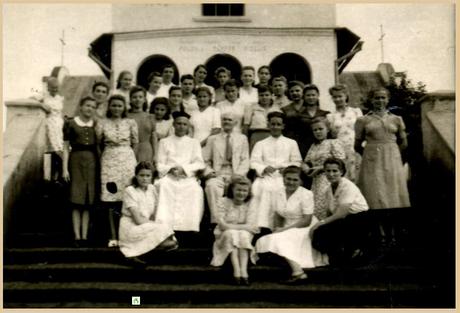
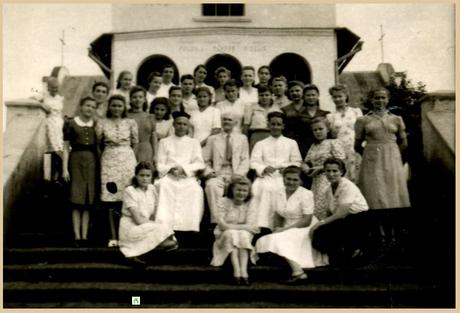
Stanisław Lula, who arrived in Uganda when he was 16 years old, recalls: "Masindi estate is a large village built especially for the reception of Polish refugees ... It was established in 1942 and consisted of 8 villages connected with each other. Our village was called 'Monkey Grove', because it bordered with bush, where there were a lot of different monkeys."
The traditional king Omukama Sir Tito Gafabua Winyi IV of Bunyoro paid occasional visits to the camp.
The Polish Church served Poles living here until the closing of the camp in 1948. Many died of tropical diseases. Of the survivors, few made it to Poland. The Polish Church's cemetery has 51 graves, 44 of which are Polish. An inscription - also in Polish - reads 'Pray for the Poles who died 1939 - 1947.'
In 2010 the cemetery was renovated by students from the Pedagogical University of Kraków in Poland.
What happened to the Polish community and church after World War II?
World War II ended in 1945. In 1948, the British started to close down the camps. Of 18,000 Poles who reached East Africa from Siberia, only 3,000 returned to Poland. The others left for other countries.
The Polish Catholic Church at Nyabyeya remains a lively church. As the Forestry College 1 km away many of the Poles' original houses still stand. Everyone is welcome to the Sunday services.
Visitors who are interested in learning about the Polish community's impact may enjoy hearing that tin containers in local shops were referred to as Polands. If you wanted a portion of beans from the shop, you would ask for a 'Poland of beans' (rather than a cup of beans). These were named after the tins that the Polish had, presumably from the days of war rationing. I was interested to learn what this Polish community had left behind in terms of influence? These were not European colonisers. (How did they get on with local people?)
There was a second Polish settlement in Uganda, at Koja in eastern Uganda. This camp was bigger but raised to the ground after the Poles left. Masindi is therefore the main base in Uganda for Poles wishing to retrace their ancestors.
Why visit the Polish Church?
- Discover WWII history and its impact on East Africa
- A destination for Poles wishing to learn about their ancestors
- An active connection with Poland
- A place to admire Polish Catholic art and iconography
- An active church
How to find the Polish Church
The church is 45 minutes' drive from Masindi and just five minutes from the Royal Mile, Budongo Forest. It's not signposted and the route takes you along winding dusty tracks (but you may just find it using Google Maps). My visit was organised by Sallie and Robert from New Court View Hotel in Masindi, where I stayed for five nights.They will make sure someone is there to open the church and give you a tour.
If you visit the Polish Church, do read the visitors' book. Many comments are from descendants of the Poles who once lived here.

